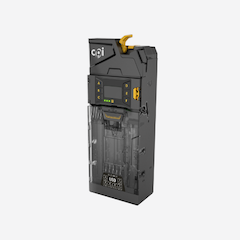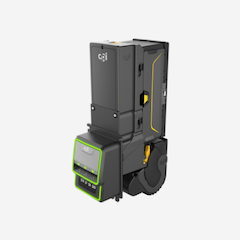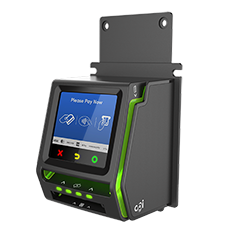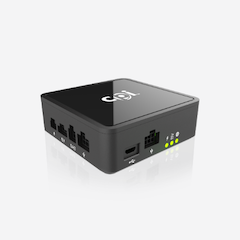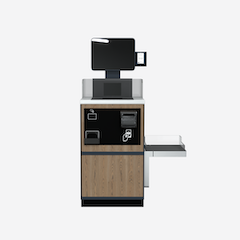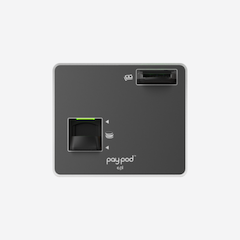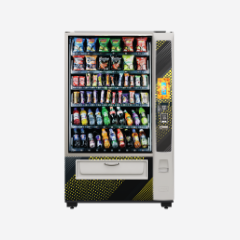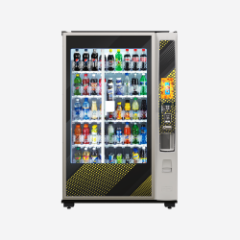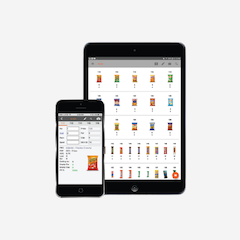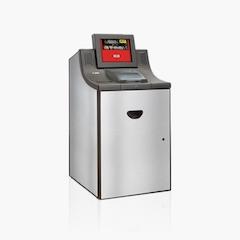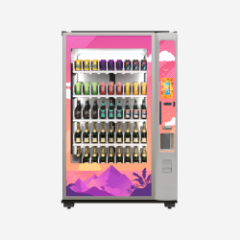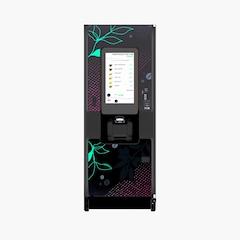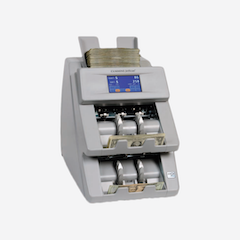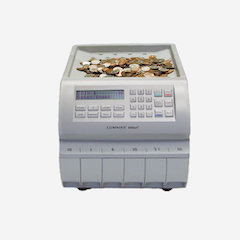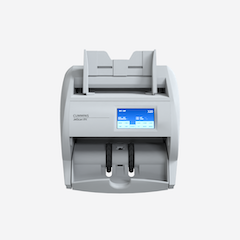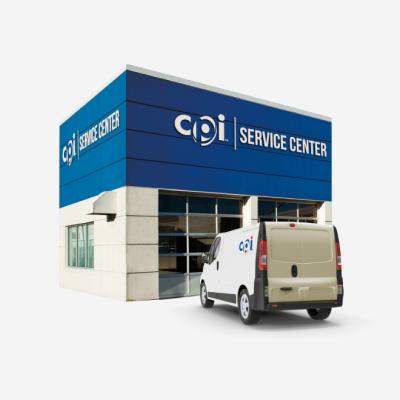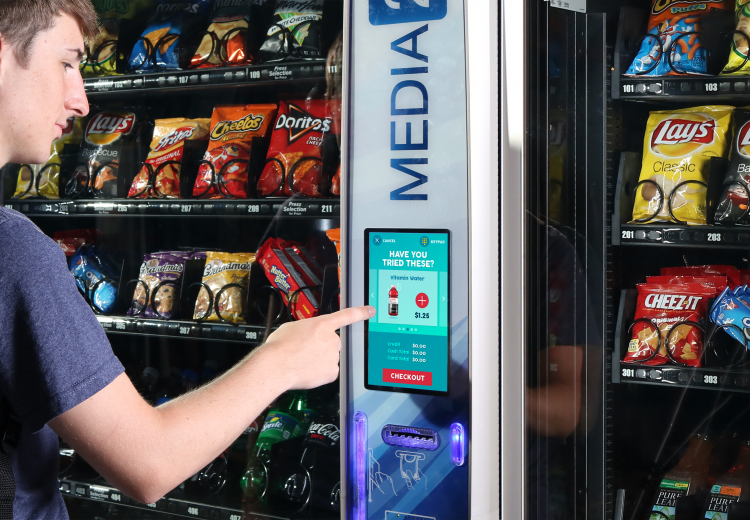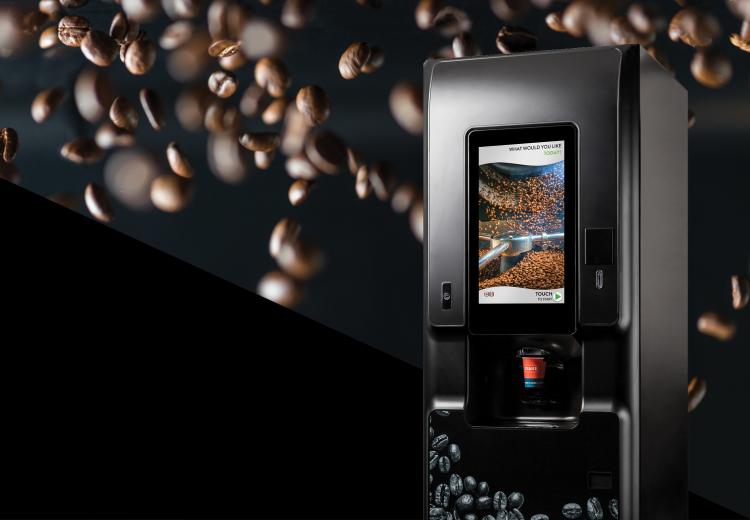The Shift
Sustainability at the Forefront
During these uncertain times, one thing is clear: sustainability has never been more important. The pandemic reminded us of the fragility of our world, reaffirming our need to protect the health of both people and the planet. That’s why it’s no surprise that in the wake of crises, businesses and industries alike are taking active steps toward a more sustainable future. And it’s not just because it’s the right thing to do, it’s what today’s consumers have come to expect.
But where do vending machine operators fit into the sustainability equation? And how can they adapt to meet evolving industry standards and the needs of environmentally conscious consumers?
The Need
Making Vending More Planet-Friendly
Traditional vending solutions have come a long way in recent years, with today’s smart machines offering everything from freshly brewed self-service coffee to cosmetics, clothing and everything in between. But alongside advances in vending technology, a green revolution has also been taking place, challenging operators to reexamine the environmental impact of their products and their machines.
From increasing the energy efficiency of their equipment to offering more eco-friendly products, operators are doing their part to ensure cleaner, greener vending operations. And for many, the most pressing change is transitioning to natural refrigerants in their refrigerated machines.
We're committed to making vending more sustainable.
See what else CPI is doing to help operators go green.
The Problem
Ozone-Depleting Synthetic Refrigerants
The cooling industry accounts for about 10% of global CO2 emissions—or three times the amount of aviation and shipping combined. Many vending machines still use commonplace refrigerants called hydrofluorocarbons (HFCs), including R134a. HFCs are potent greenhouse gases with high Global Warming Potential (GWP), trapping substantially more heat than CO2. That’s why replacing HFCs with climate-friendly chemicals, also known as natural refrigerants, is a huge part of the solution.
Bring the Latest in Unattended Retail Technology to Your Business
Learn More About Our Machines
The Solution
Climate-friendly HFC Alternatives
To reduce emissions of HFCs, a variety of climate-friendly, safe and proven alternatives are available. These include natural refrigerants and blends, CO2 and hydrocarbon. As with any change, operators will need to plan accordingly—but this change has been all but overnight. In fact, hydrocarbon refrigerants have replaced the use of HFCs in Europe since the mid-1990s, and global brands like PepsiCo and Coca-Cola began the shift to hydrocarbons more than a decade ago. To keep up with the changing regulatory landscape and key climate goals, HFC phase-outs are planned on a broader scale both domestically and internationally.
The Big Change
Shifting to Cleaner Refrigerants
In November, after more than two years of research and advocacy work, the National Automatic Merchandising Association (NAMA) updated national safety standards in the U.S., allowing for the unrestricted placement of vending machines refrigerated with advanced, environmentally-friendly coolants. This has opened the door for vending operators to make green vending the new industry standard, with
R290, a commercially available natural gas, being one of the most popular choices in replacing HFCs.
So as the phase-out continues to heat up in the U.S., here’s what operators need to know to navigate the transition.
- Select a vending partner that’s committed to clean energy solutions. As you explore alternative refrigerants and new equipment, the right partner should be able to help you transition and explore green-friendly, approved, regulatory-friendly products and solutions. There’s no one-size-fits-all approach, but we recommend hydrocarbons like R290. With its excellent thermodynamic properties, R290 is a non-toxic, naturally occurring substance with zero Ozone Depletion Potential (OPD) and very low GWP (less than 3).
- Protect your investment by transitioning early. Remember that while the HFC-phase out won’t be overnight, it is inevitable. Be strategic in your approach, do your research and communicate openly and honestly with your customers about what they can expect. Waiting until the last minute to update machines can put unnecessary pressure on operators, making it difficult to be strategic. Choosing the right green technology will ensure your equipment is up to par with industry regulations and customer expectations—a win-win for any vending operator.
- Take advantage of coinciding updates in machine technology. Remember that the EPA ruled that the retrofitting of existing equipment is prohibited by law. When selecting new equipment, look for solutions that make the vending experience more convenient for both customers and operators. This includes technologies like USB software updates to optimize serviceability, error-proof wiring and LED diagnostics. These enhancements offer an array of operational benefits ranging from less machine downtime to improved serviceability features when issues do arise. Technologies like responsive touchscreens can also increase sales, enhance performance and attract new customers with colorful, eye-catching graphics, advertising and targeted messaging. Machines with low voltage, universal power supplies and components like brushless motors can also be more energy efficient, making vending even greener than ever before.
- Remember that small changes can have a big impact. Going green isn’t about racing to the finish line. It’s about taking active steps to enhance the functionality, efficiency and performance of your machine—all while taking less from the Earth. There are myriad ways to decrease your footprint without compromising performance. Selecting machines that are Energy Star certified is an easy way for operators to lower their environmental impact and their total cost of ownership.
The Conclusion
Why Going Green Makes Cents
With businesses worldwide already making fundamental shifts to their strategies, products, services and operational models, now is the time to integrate sustainability along the way. So as retailers continue to find new ways to meet the needs of increasingly conscious customers, vending operators would be wise to stay competitive.
Your customers care about the environment and want to feel good about what they buy—right down to the snacks and beverages they purchase when they’re on the go. Our world is changing and the only way for operators to survive—and thrive—in a new economy is to make sustainability a priority.

